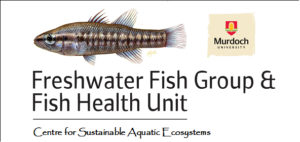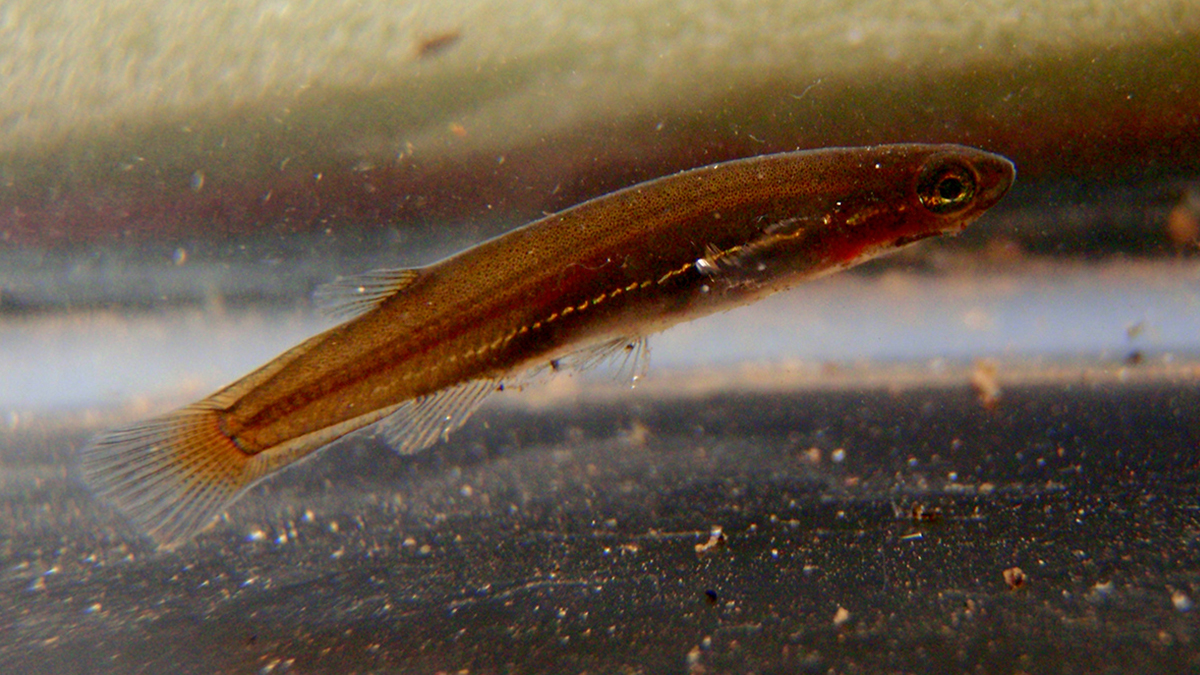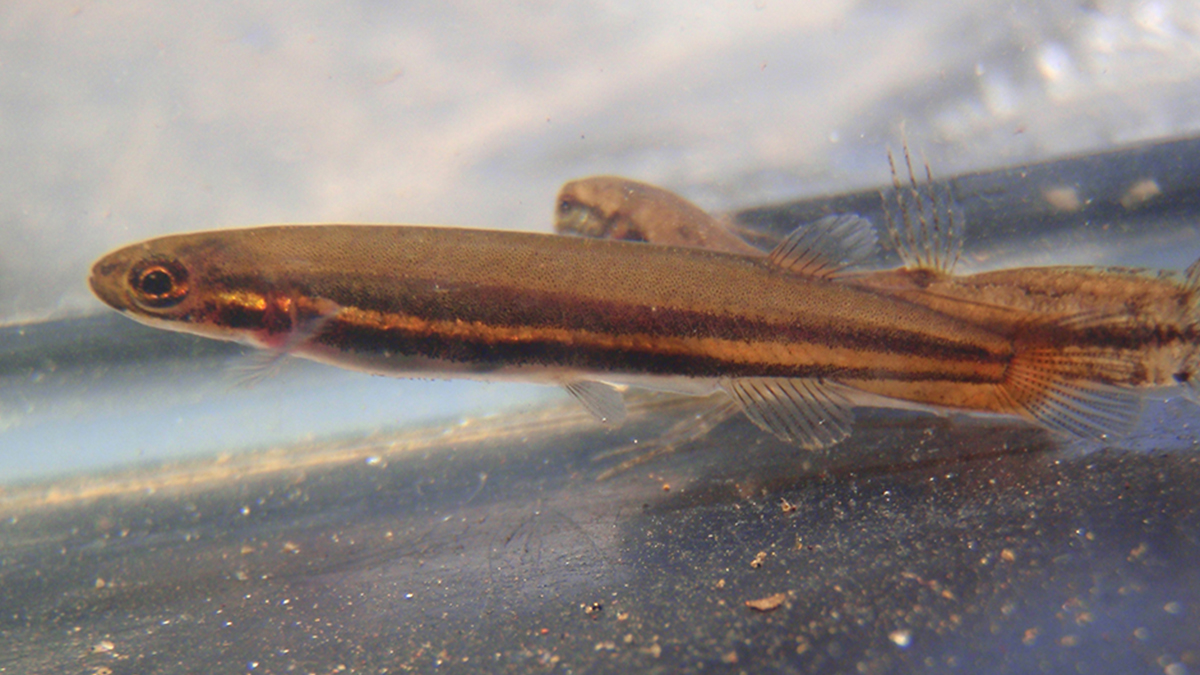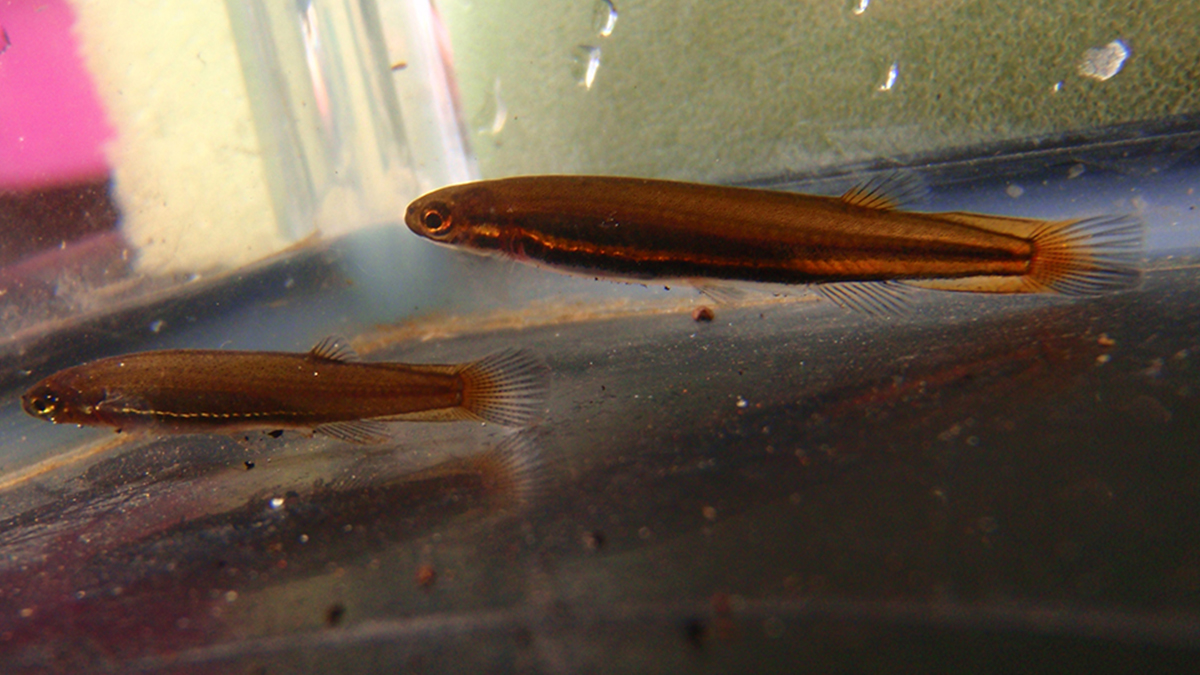Black-stripe minnow - Galaxiella nigrostriata
This page was created in partnership with the Freshwater Fish Group and Fish Health Unit at Murdoch University
Identification
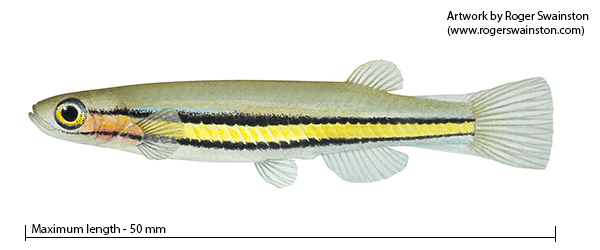
A small fish rarely exceeding 50 mm.
Distinguished by a distinctive black-margined, yellow to orange line running down both sides from the eye to the base of the caudal fin.
Similar in appearance to the western mud minnow, but the mud minnow is generally more slender and without the characteristic black lines. Lines and colours can be less pronounced in non-breeding fish and in heavily tanning-stained waters (where overall body colour darkens), so care must be taken in identification. The dorsal fin of originates anterior to the 5th anal ray in black-stripe minnow, whereas the dorsal fin originates posterior to the 5th anal ray in the western mud minnow.
They are generally found in ephemeral, tannin-stained wetland habitats (as opposed to the more permanent stream habitats preferred by the western mud minnow).
Body colour is typically dark, olive-brown on the back and sides, though will lighten when held in clear water.
Distribution
Largely restricted to near-coastal wetlands from Augusta to Albany, although populations are also known near Bunbury and in the Ellen Brook catchment north of Perth.
The existence of these satellite populations suggests that the minnow previously occurred in other wetlands along the Swan Coastal Plain, and perhaps were displaced as wetlands have been lost or degraded as the area was developed (e.g. salinisation, eutrophication, sedimentation, water abstraction), and in response to invasion of exotic species and due to a drying climate.
Habitat
Occupies the same ephemeral habitats as the salamanderfish and, like that species, is also capable of burrowing and aestivating (a state of dormancy similar to hibernation, characterised by inactivity and a lowered metabolic rate) to survive the dry summer.
Biology
Breeding occurs between late autumn and spring (May to October), i.e. while their ephemeral habitats are inundated. Females will lay multiple batches of eggs during this period.
Most fish only live for one year, dying shortly after spawning.
Diet consists largely of terrestrial insects as juveniles and adults, while larvae consume aquatic crustaceans and dipteran larvae.
Conservation status
Threatened species: Listed as endangered under the Biodiversity Conservation Act 2016 (state, Western Australia), the Environment Protection and Biodiversity Conservation Act 1999 (Commonwealth) and the ICUN Redlist of Threatened Species 2019 (International).
Under the BC Act, Threatened species are listed in the category of critically endangered, endangered or vulnerable. Endangered species are considered to be “facing a very high risk of extinction in the wild in the near future, as determined in accordance with criteria set out in the ministerial guidelines”.
Further information
Contact the department’s River Science team, or the Murdoch Freshwater Fish Group via email: fish@murdoch.edu.au, or go to their website: www.freshwaterfishgroup.com
